Producing a clear beer has been the goal of brewers for eons, despite several examples which call for intentional haze. For the homebrewer this is particularly difficult without the use of a commercial beer filter and packaging line. However, beer filtering equipment (such as beer filtering kits) are out there and can make a huge difference and produce a cleaner tasting beer.
Before I go into any kind of homebrew beer filter system, I want to give you some insights on how to filter beer commercially. Knowing how it’s done commercially may help you design your own beer filtration systems, whether you are a homebrewer or running a commercial brewery.
Why Filter Beer
If you are reading this article, chances are you already make beer at home (or as a microbrewer with your own existing keg system) and you need to achieve better clarity. I probably don’t need to tell you that a bottle-conditioned beer will always contain yeast, but just in case: due to the nature of bottle conditioning, yeast will be grown in your bottle. You can’t avoid this. If you want a clear beer, you need to pour your beer carefully or invest in a carbonation system such as a Cornelius keg setup.
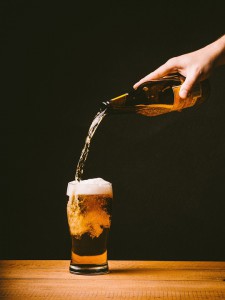
Filtration removes the haze in beer created by yeast, tub, and various proteins that can occur at almost every stage of production – you may have heard of ‘chill haze’ or ‘protein haze’. Filtration is mainly superficial; it removes the haze for better presentation.
However, there are a few other reasons why a brewer may need to filter their beer:
- Presentation
- Sterilisation (through a ‘sterile filter,’ usually used for packaging involving draft kegs)
- Improve shelf life of the beer
- Flavor
- Speed up production time
Commercial Beer Filters
There are three main types of filter as far as I am aware – and yes, I have used all of these. If you know of a type of filter I have missed, please let me know in the comments and I will add them to this list.
DE filter
DE stands for Diatomaceous Earth, which is a fine, porous type of silicon sand. This filter system basically mixes the beer with various grades of DE and use pressure to build up layers of DE against a filter plate. The result is a multi-layered DE filter bed which traps particles as the beer flows through.
DE filters are widely used as they are relatively cheap to operate and do not require replacement cartridges or plates. They tend to be used ‘in-line’, after fermentation and before the bright tank.
These filters are very fiddly to use, and require highly specific flow speeds and pressures. They have many moving parts and some tend to break easily. DE is a known carcinogen and there is evidence to suggest exposure to granulated DE may increase your risk of lung cancer.
You can get some great results with a DE filter, but I personally hate using them.
Plate And Frame Filter
This is my personal favorite. It is basically a big rack, loaded with oversized coffee filters and compressed into a single filter. The oversized coffee filters are actually a special type of paper (called ‘filter papers’) and the beer passes through them, one in a row, to remove any haze.
You have to be extra careful with the cleaning and sanitizing process, as the filter papers are only good for a single use, but these babies are super easy to use and do a great job. You basically just set it up and plug in a beer hose at either end, the beer is then filtered through the papers as it travels to the next vessel.
Like the DE filter, the plate filter is mainly used in line from the fermentation vessel to the bright beer tank.
Cartridge Filter
This is a very broad definition for a very wide range of filters. Cartridge filters involve removable membranes that are usually made from filter paper or a prefabricated form of DE. They are extremely easy to use and come in just about any grade of filtration.
Due to their convenience and range, they are used in many stages of brewing. For example, a series of cartridge filters ranging from 0.5 to 0.1 micron will often be used for sterile filtration of beer before packaging, even after initial filtration is done with a DE or Plate and Frame Filter. The same brewery may also have a completely separate cartridge filter for water treatment purposes.
Despite the ease and convenience, they are not my favorite to work with. The main drawback to cartridge filters is the cartridges themselves – it is super painful to clean them. They often block up mid-filtration and you have to break down the filtration to replace cartridges, costing time and effort. I have found soaking cartridges in caustic soda can help, but then they need to be flushed out with sterile water or even beer before being reused.
Eventually, after being cleaned several times, you still need to replace the cartridges. Despite the hassle of cleaning and replacing cartridges, these are probably the simplest method of commercial beer filtration I know of.
Homebrew Beer Filters
Filtering home brew beer is really tricky to get right and many people give up after one or two attempts. In fact, you may find it completely unnecessary – that is, if you have time to clear your beer in secondary fermentation before packaging.
First off, I need to remind you: If you are bottle-conditioning your beers, do not filter.
The principles of filtering beer at home are the same as filtering in a commercial brewery, and you can
apply these types of filtration to any DIY filtration or homemade beer filter setup. There are papers for use with a funnel, like a coffee filter, but even at a small batch size these are very time consuming and carry infection and oxidization risks.
The most common homebrew beer filter (readily available on eBay – but please read my review first) is a simple cartridge, available in various grades. To trap yeast, I recommend a 0.5 micron filter. These are widely produced and therefore it is hard to determine build quality – use with care.
You can also find several home-made wine filters that do a great job for beer – check them out at homebrewing.org. They are a small scale version of a plate and frame filter and really great for beer clarification (although you will need to replace the papers after each use).
Filtration Tips
- Always run sanitizer through your filters before use. In fact, I like to have an extra keg handy and run sanitizer through the entire system first. You may need to let everything rest for 20 minutes, full of sanitizer, before introducing your beer.
- Expect to lose some of your product after flushing your filters with sanitizer – otherwise you will have traces of sanitizer in your end product.
- Don’t rush filtration – use gravity or low-pressure. A slow filtration is better for clarity and better for maintaining your gear.
- For Cartridges: After filtration, back-flush your filter by running clean water backwards through the system – this will dislodge much of the trapped impurities and make cleaning easier.
- After back-flushing, soak your cartridge in cleaning solution for several hours prior to cleaning. Get a cleaning solution here.
- Have spares! You’ll need extra papers or cartridges handy. Trust me on this.
CHEERS!
If you are looking for a beer filter kit or any homebrew filters in your country, please check out my list of suppliers by country.
If you have any questions about filtration or you have come across any types of filters not listed here, let me know in the comments section!
Read next: The Science Behind Beer Koozies: How They Keep Your Beverage Cold!, Drink Counting Beer Koozies – Personalized Gifts for Brewers and How to Build the Perfect Homebrewing System from Scratch




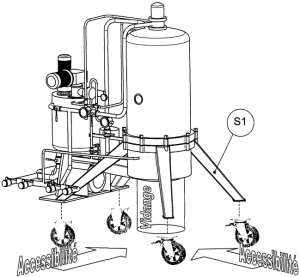
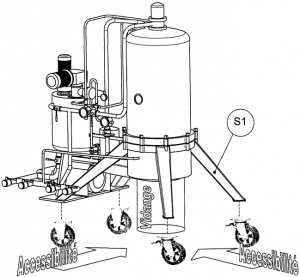
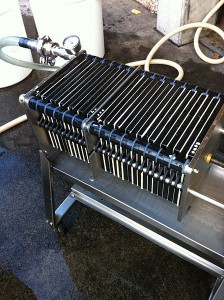
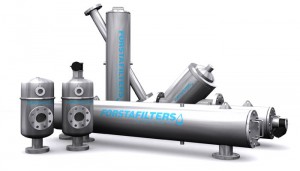
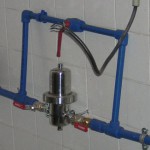
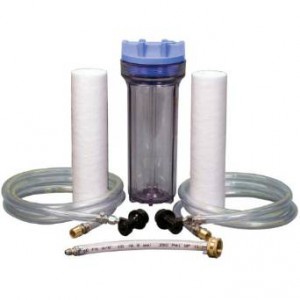
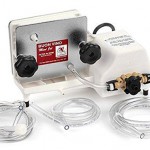
Hi Jesse,
I found you article to be really helpful.
I am a home-brewer for about 3 months now and I must say, I truly enjoy it. My beer is also not very clear, but I must say it doesn’t bother me too much. I am not selling it and it tastes great!
The one thing that caught my attention is that you say not to filter beers that is bottle-conditioned. I will definitely remember that.
Thanks for the awesome blog!
Hi CJ,
Thanks for your comment. When bottle conditioning, there is a different approach, as you need a little yeast present to produce the Co2, and more yeast is produced in the bottle anyway.
Once your beer has been in the bottle for a while, simply store your beer upright in the refrigerator and serve very carefully, you should get a clear result anyway.
Of course, you may find yourself wanting to move to kegs at some point. Try this article for details, and keep up the good brews!